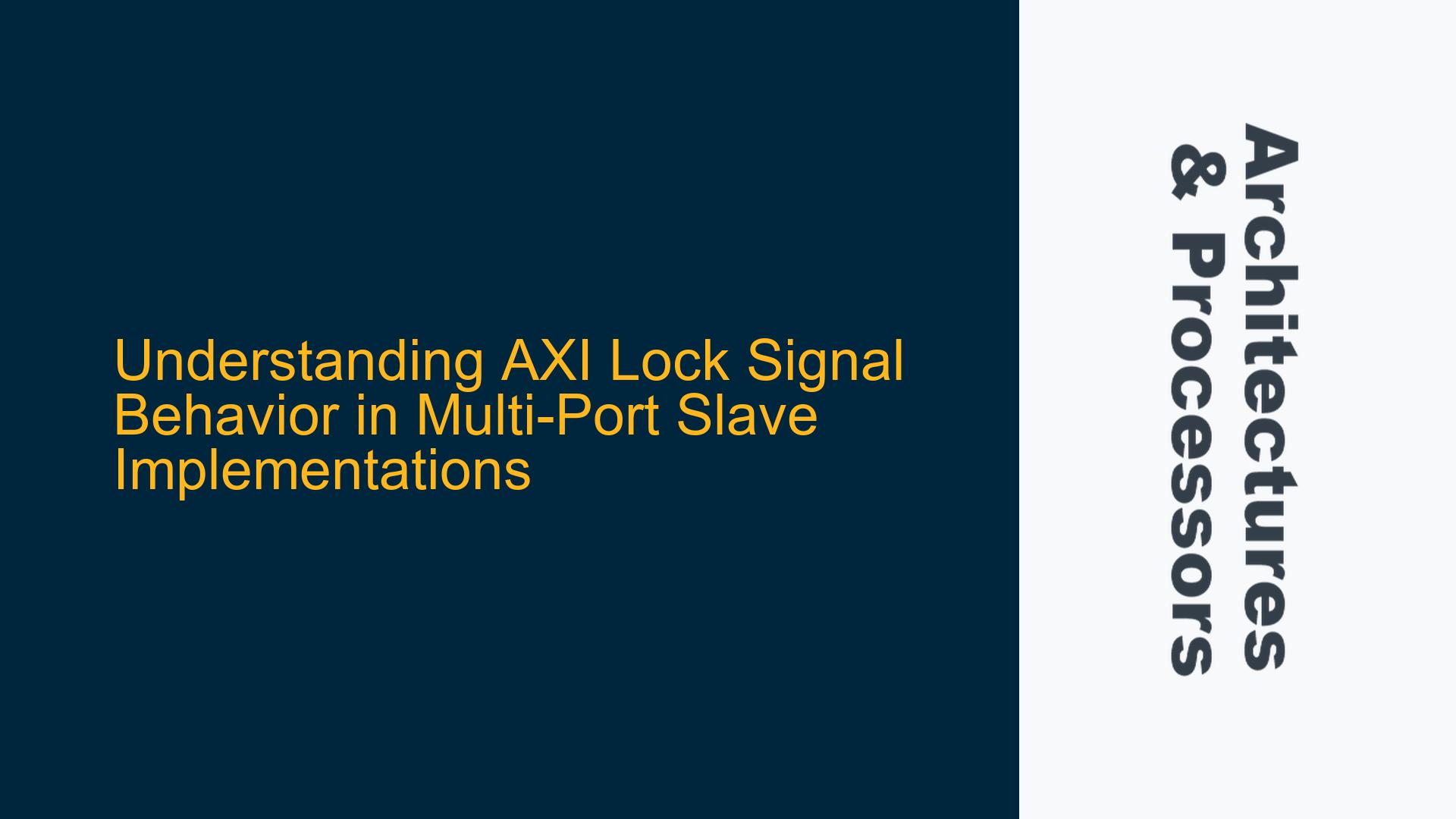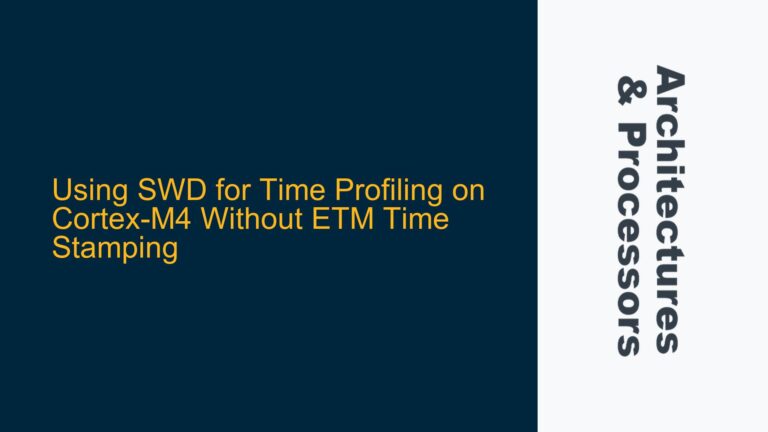AXI Lock Signal Handling in Single-Port vs. Multi-Port Slaves
The AXI protocol defines the AxLOCK signal as a mechanism for masters to request locked or exclusive access to a slave. In a typical single-port AXI slave implementation, the slave does not need to explicitly handle the AxLOCK signal. The slave simply processes the read or write transaction as requested by the master, while the interconnect ensures that no other master can interrupt the locked sequence. This behavior is straightforward and aligns with the AXI specification, where the interconnect is responsible for managing arbitration and ensuring atomicity during locked sequences.
However, the situation becomes more complex when dealing with multi-port slaves, such as dual-port RAMs or multi-port memory controllers. In these cases, the slave must ensure that a locked sequence on one port does not conflict with accesses on other ports. For example, if Master A initiates a locked sequence on Port 1 of a dual-port RAM, the slave must prevent Master B from accessing the same memory region through Port 2 during the locked sequence. This requires additional logic within the slave to coordinate access across multiple ports and ensure data integrity.
The AXI specification restricts locked sequences to a 4KB boundary, which simplifies the implementation of multi-port slaves. By limiting locked sequences to a specific 4KB region, the slave can allow concurrent accesses on other ports as long as they target different 4KB regions. This approach minimizes contention and maximizes throughput while still adhering to the AXI protocol requirements.
Potential Issues with Lock Signal Implementation in Multi-Port Slaves
One of the primary challenges in implementing AxLOCK signal handling in multi-port slaves is ensuring proper synchronization between ports. If the slave does not correctly coordinate access across ports, it can lead to data corruption or deadlock scenarios. For example, if Master A initiates a locked sequence on Port 1 and Master B attempts to access the same memory region on Port 2, the slave must either block Master B’s access or ensure that Master B’s access does not interfere with Master A’s locked sequence.
Another potential issue is the handling of back-to-back locked sequences. If a master initiates multiple locked sequences in quick succession, the slave must ensure that each sequence is completed before starting the next. This requires careful management of the internal state and may involve additional buffering or queuing mechanisms to handle overlapping requests.
Additionally, the slave must account for the possibility of aborted or interrupted locked sequences. If a master aborts a locked sequence or if the interconnect terminates the sequence due to an error, the slave must clean up any internal state and release any resources that were allocated for the sequence. Failure to do so can result in resource leaks or incorrect behavior in subsequent transactions.
Strategies for Implementing and Verifying Lock Signal Handling in Multi-Port Slaves
To address the challenges of implementing AxLOCK signal handling in multi-port slaves, designers can adopt several strategies. First, the slave should include logic to detect and enforce the 4KB boundary restriction for locked sequences. This can be achieved by comparing the address of each transaction with the base address of the locked sequence and ensuring that all transactions within the sequence fall within the same 4KB region.
Second, the slave should implement a mechanism to block or redirect accesses on other ports that conflict with an active locked sequence. This can be done using a combination of address decoding and port arbitration logic. For example, the slave can maintain a table of active locked sequences and their corresponding 4KB regions. When a new access request arrives on a different port, the slave can check the table to determine if the access conflicts with an active locked sequence and take appropriate action.
Third, the slave should include state machines to manage the lifecycle of locked sequences, including handling aborted or interrupted sequences. This involves tracking the start and end of each sequence, cleaning up internal state when a sequence is terminated, and ensuring that resources are properly released.
From a verification perspective, it is essential to thoroughly test the slave’s handling of locked sequences across all ports. This includes testing scenarios with concurrent locked sequences on different ports, back-to-back locked sequences, and aborted or interrupted sequences. Verification engineers should also test edge cases, such as locked sequences that span the boundary between two 4KB regions or sequences that involve non-aligned addresses.
To facilitate verification, designers can use SystemVerilog and UVM to create a comprehensive testbench that includes monitors, checkers, and scoreboards to track the behavior of the slave and ensure compliance with the AXI specification. The testbench should also include assertions to check for protocol violations, such as overlapping locked sequences or accesses that violate the 4KB boundary restriction.
In conclusion, implementing and verifying AxLOCK signal handling in multi-port AXI slaves requires careful consideration of the protocol requirements and potential edge cases. By adopting a systematic approach to design and verification, engineers can ensure that their multi-port slaves handle locked sequences correctly and maintain data integrity across all ports.






